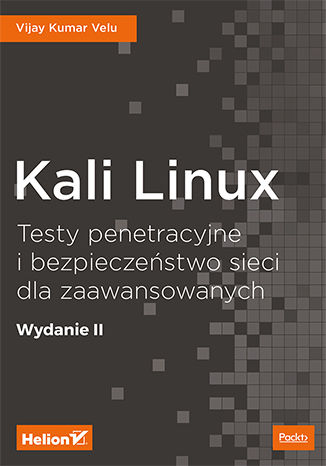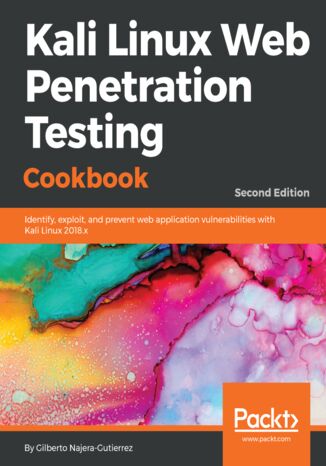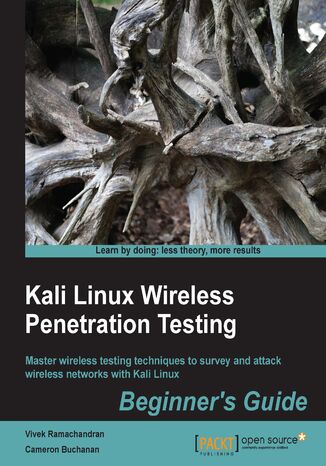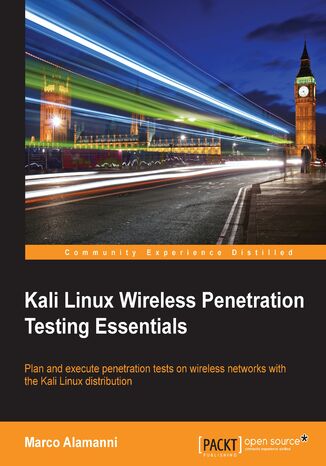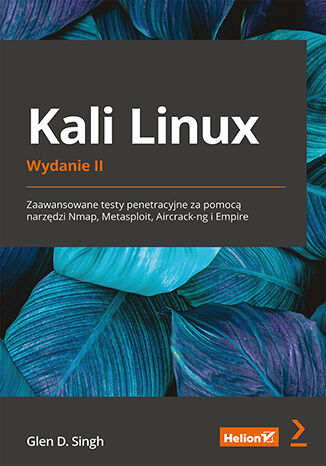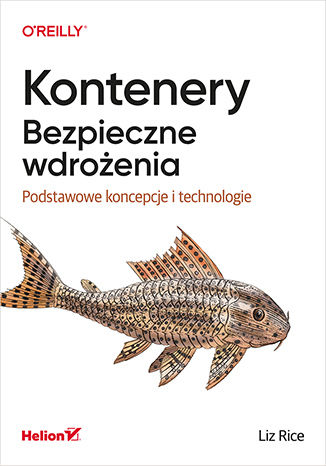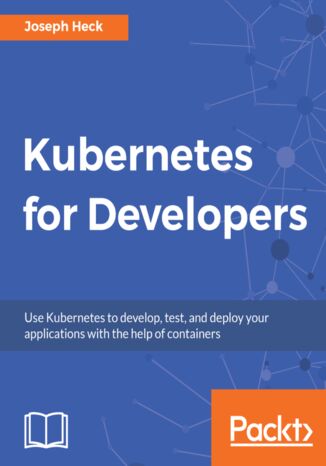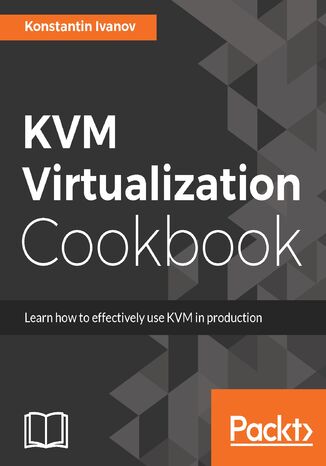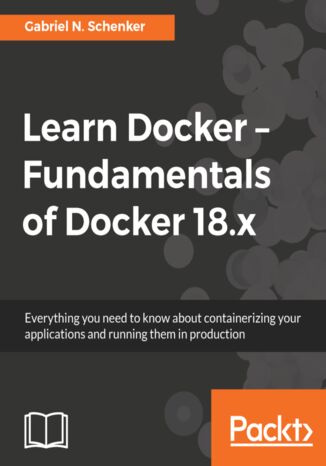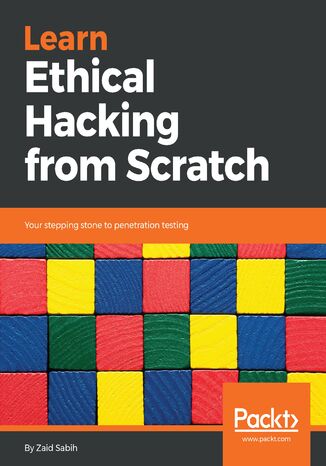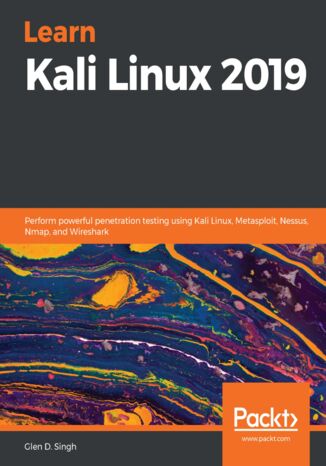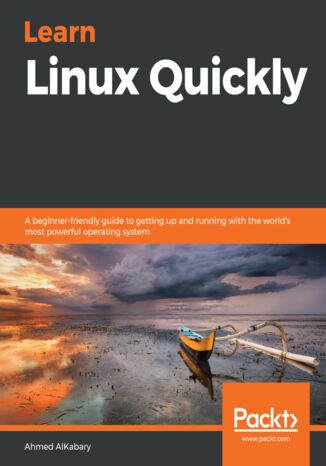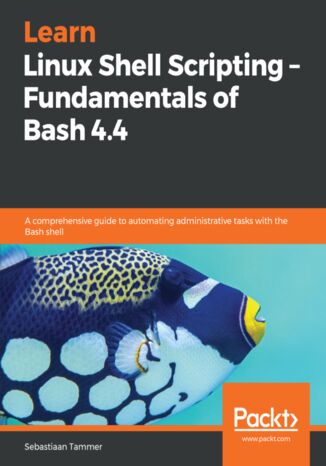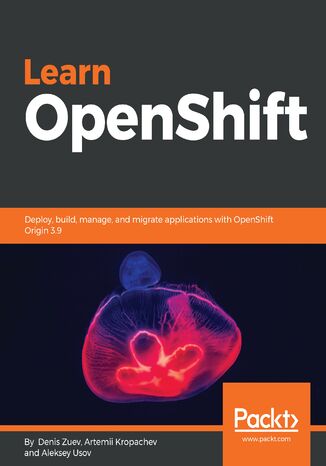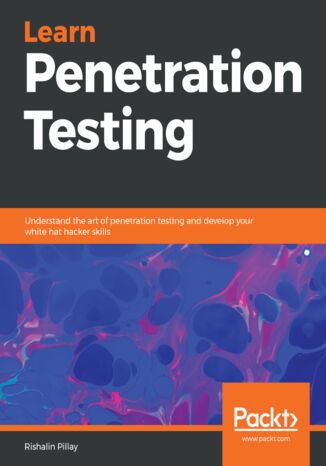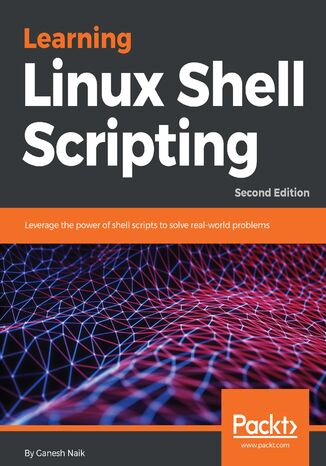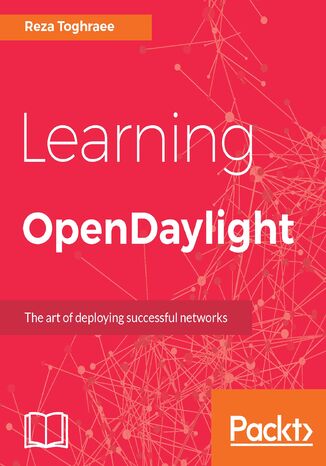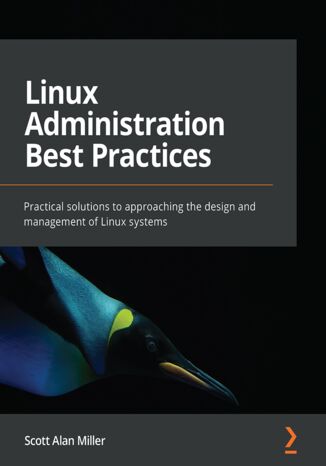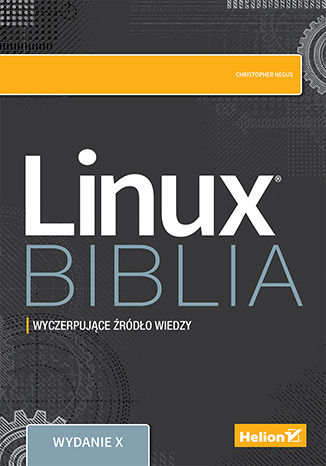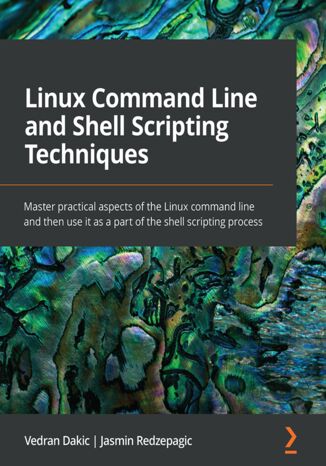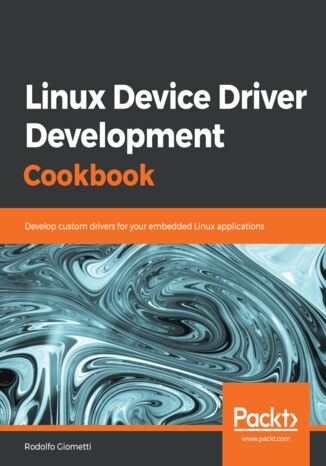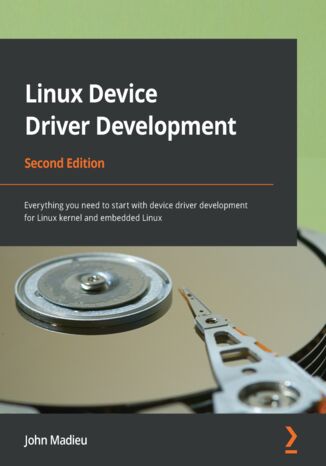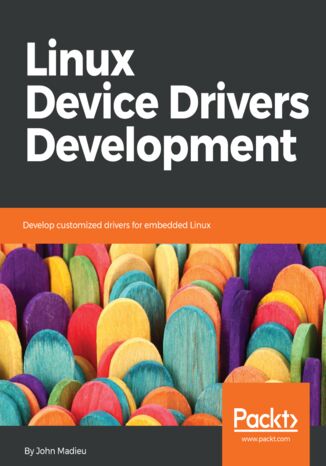Kategorie
Ebooki
-
Biznes i ekonomia
- Bitcoin
- Bizneswoman
- Coaching
- Controlling
- E-biznes
- Ekonomia
- Finanse
- Giełda i inwestycje
- Kompetencje osobiste
- Komputer w biurze
- Komunikacja i negocjacje
- Mała firma
- Marketing
- Motywacja
- Multimedialne szkolenia
- Nieruchomości
- Perswazja i NLP
- Podatki
- Polityka społeczna
- Poradniki
- Prezentacje
- Przywództwo
- Public Relation
- Raporty, analizy
- Sekret
- Social Media
- Sprzedaż
- Start-up
- Twoja kariera
- Zarządzanie
- Zarządzanie projektami
- Zasoby ludzkie (HR)
-
Dla dzieci
-
Dla młodzieży
-
Edukacja
-
Encyklopedie, słowniki
-
E-prasa
- Architektura i wnętrza
- BHP
- Biznes i Ekonomia
- Dom i ogród
- E-Biznes
- Ekonomia i finanse
- Ezoteryka
- Finanse
- Finanse osobiste
- Firma
- Fotografia
- Informatyka
- Kadry i płace
- Kobieca
- Komputery, Excel
- Księgowość
- Kultura i literatura
- Naukowe i akademickie
- Ochrona środowiska
- Opiniotwórcze
- Oświata
- Podatki
- Podróże
- Psychologia
- Religia
- Rolnictwo
- Rynek książki i prasy
- Transport i Spedycja
- Zdrowie i uroda
-
Historia
-
Informatyka
- Aplikacje biurowe
- Bazy danych
- Bioinformatyka
- Biznes IT
- CAD/CAM
- Digital Lifestyle
- DTP
- Elektronika
- Fotografia cyfrowa
- Grafika komputerowa
- Gry
- Hacking
- Hardware
- IT w ekonomii
- Pakiety naukowe
- Podręczniki szkolne
- Podstawy komputera
- Programowanie
- Programowanie mobilne
- Serwery internetowe
- Sieci komputerowe
- Start-up
- Systemy operacyjne
- Sztuczna inteligencja
- Technologia dla dzieci
- Webmasterstwo
-
Inne
-
Języki obce
-
Kultura i sztuka
-
Lektury szkolne
-
Literatura
- Antologie
- Ballada
- Biografie i autobiografie
- Dla dorosłych
- Dramat
- Dzienniki, pamiętniki, listy
- Epos, epopeja
- Esej
- Fantastyka i science-fiction
- Felietony
- Fikcja
- Humor, satyra
- Inne
- Klasyczna
- Kryminał
- Literatura faktu
- Literatura piękna
- Mity i legendy
- Nobliści
- Nowele
- Obyczajowa
- Okultyzm i magia
- Opowiadania
- Pamiętniki
- Podróże
- Poemat
- Poezja
- Polityka
- Popularnonaukowa
- Powieść
- Powieść historyczna
- Proza
- Przygodowa
- Publicystyka
- Reportaż
- Romans i literatura obyczajowa
- Sensacja
- Thriller, Horror
- Wywiady i wspomnienia
-
Nauki przyrodnicze
-
Nauki społeczne
-
Podręczniki szkolne
-
Popularnonaukowe i akademickie
- Archeologia
- Bibliotekoznawstwo
- Filmoznawstwo
- Filologia
- Filologia polska
- Filozofia
- Finanse i bankowość
- Geografia
- Gospodarka
- Handel. Gospodarka światowa
- Historia i archeologia
- Historia sztuki i architektury
- Kulturoznawstwo
- Lingwistyka
- Literaturoznawstwo
- Logistyka
- Matematyka
- Medycyna
- Nauki humanistyczne
- Pedagogika
- Pomoce naukowe
- Popularnonaukowa
- Pozostałe
- Psychologia
- Socjologia
- Teatrologia
- Teologia
- Teorie i nauki ekonomiczne
- Transport i spedycja
- Wychowanie fizyczne
- Zarządzanie i marketing
-
Poradniki
-
Poradniki do gier
-
Poradniki zawodowe i specjalistyczne
-
Prawo
- BHP
- Historia
- Kodeks drogowy. Prawo jazdy
- Nauki prawne
- Ochrona zdrowia
- Ogólne, kompendium wiedzy
- Podręczniki akademickie
- Pozostałe
- Prawo budowlane i lokalowe
- Prawo cywilne
- Prawo finansowe
- Prawo gospodarcze
- Prawo gospodarcze i handlowe
- Prawo karne
- Prawo karne. Przestępstwa karne. Kryminologia
- Prawo międzynarodowe
- Prawo międzynarodowe i zagraniczne
- Prawo ochrony zdrowia
- Prawo oświatowe
- Prawo podatkowe
- Prawo pracy i ubezpieczeń społecznych
- Prawo publiczne, konstytucyjne i administracyjne
- Prawo rodzinne i opiekuńcze
- Prawo rolne
- Prawo socjalne, prawo pracy
- Prawo Unii Europejskiej
- Przemysł
- Rolne i ochrona środowiska
- Słowniki i encyklopedie
- Zamówienia publiczne
- Zarządzanie
-
Przewodniki i podróże
- Afryka
- Albumy
- Ameryka Południowa
- Ameryka Środkowa i Północna
- Australia, Nowa Zelandia, Oceania
- Austria
- Azja
- Bałkany
- Bliski Wschód
- Bułgaria
- Chiny
- Chorwacja
- Czechy
- Dania
- Egipt
- Estonia
- Europa
- Francja
- Góry
- Grecja
- Hiszpania
- Holandia
- Islandia
- Litwa
- Łotwa
- Mapy, Plany miast, Atlasy
- Miniprzewodniki
- Niemcy
- Norwegia
- Podróże aktywne
- Polska
- Portugalia
- Pozostałe
- Przewodniki po hotelach i restauracjach
- Rosja
- Rumunia
- Słowacja
- Słowenia
- Szwajcaria
- Szwecja
- Świat
- Turcja
- Ukraina
- Węgry
- Wielka Brytania
- Włochy
-
Psychologia
- Filozofie życiowe
- Kompetencje psychospołeczne
- Komunikacja międzyludzka
- Mindfulness
- Ogólne
- Perswazja i NLP
- Psychologia akademicka
- Psychologia duszy i umysłu
- Psychologia pracy
- Relacje i związki
- Rodzicielstwo i psychologia dziecka
- Rozwiązywanie problemów
- Rozwój intelektualny
- Sekret
- Seksualność
- Uwodzenie
- Wygląd i wizerunek
- Życiowe filozofie
-
Religia
-
Sport, fitness, diety
-
Technika i mechanika
Audiobooki
-
Biznes i ekonomia
- Bitcoin
- Bizneswoman
- Coaching
- Controlling
- E-biznes
- Ekonomia
- Finanse
- Giełda i inwestycje
- Kompetencje osobiste
- Komunikacja i negocjacje
- Mała firma
- Marketing
- Motywacja
- Nieruchomości
- Perswazja i NLP
- Podatki
- Polityka społeczna
- Poradniki
- Prezentacje
- Przywództwo
- Public Relation
- Sekret
- Social Media
- Sprzedaż
- Start-up
- Twoja kariera
- Zarządzanie
- Zarządzanie projektami
- Zasoby ludzkie (HR)
-
Dla dzieci
-
Dla młodzieży
-
Edukacja
-
Encyklopedie, słowniki
-
E-prasa
-
Historia
-
Informatyka
-
Inne
-
Języki obce
-
Kultura i sztuka
-
Lektury szkolne
-
Literatura
- Antologie
- Ballada
- Biografie i autobiografie
- Dla dorosłych
- Dramat
- Dzienniki, pamiętniki, listy
- Epos, epopeja
- Esej
- Fantastyka i science-fiction
- Felietony
- Fikcja
- Humor, satyra
- Inne
- Klasyczna
- Kryminał
- Literatura faktu
- Literatura piękna
- Mity i legendy
- Nobliści
- Nowele
- Obyczajowa
- Okultyzm i magia
- Opowiadania
- Pamiętniki
- Podróże
- Poezja
- Polityka
- Popularnonaukowa
- Powieść
- Powieść historyczna
- Proza
- Przygodowa
- Publicystyka
- Reportaż
- Romans i literatura obyczajowa
- Sensacja
- Thriller, Horror
- Wywiady i wspomnienia
-
Nauki przyrodnicze
-
Nauki społeczne
-
Popularnonaukowe i akademickie
-
Poradniki
-
Poradniki zawodowe i specjalistyczne
-
Prawo
-
Przewodniki i podróże
-
Psychologia
- Filozofie życiowe
- Komunikacja międzyludzka
- Mindfulness
- Ogólne
- Perswazja i NLP
- Psychologia akademicka
- Psychologia duszy i umysłu
- Psychologia pracy
- Relacje i związki
- Rodzicielstwo i psychologia dziecka
- Rozwiązywanie problemów
- Rozwój intelektualny
- Sekret
- Seksualność
- Uwodzenie
- Wygląd i wizerunek
- Życiowe filozofie
-
Religia
-
Sport, fitness, diety
-
Technika i mechanika
Kursy video
-
Bazy danych
-
Big Data
-
Biznes, ekonomia i marketing
-
Cyberbezpieczeństwo
-
Data Science
-
DevOps
-
Dla dzieci
-
Elektronika
-
Grafika/Wideo/CAX
-
Gry
-
Microsoft Office
-
Narzędzia programistyczne
-
Programowanie
-
Rozwój osobisty
-
Sieci komputerowe
-
Systemy operacyjne
-
Testowanie oprogramowania
-
Urządzenia mobilne
-
UX/UI
-
Web development
-
Zarządzanie
Podcasty
- Ebooki
- Systemy operacyjne
- Linux
Linux
Kali Linux. Testy penetracyjne i bezpieczeństwo sieci dla zaawansowanych. Wydanie II
Kali Linux jest dystrybucją BackTrack systemu Linux służącą do zaawansowanego badania zabezpieczeń systemów teleinformatycznych, również poprzez testy penetracyjne. Naturalnie, praca pentestera wiąże się również z przeprowadzaniem rozpoznania, skanowaniem w poszukiwaniu słabych stron zabezpieczeń, wykorzystywaniem exploitów, omijaniem zabezpieczeń i późniejszą eksploracją skompromitowanych systemów. W ten sposób diagnozuje się słabe strony systemu, co z kolei umożliwia usunięcie usterek i osiągnięcie wysokiego stopnia bezpieczeństwa. Realizacja tak ambitnego celu wymaga jednak znakomitego przygotowania i szerokiej wiedzy pentestera. Dzięki tej książce poznasz sprawdzone techniki pokonywania mechanizmów obronnych różnych systemów za pomocą narzędzi dostępnych w Kali Linux. Dowiesz się, jak wybrać najbardziej efektywne rozwiązania, nauczysz się szybkiego skanowania sieci w poszukiwaniu luk w systemie zabezpieczeń, aż w końcu będziesz mógł przeprowadzić atak i powłamaniową eksplorację środowiska, przy czym będziesz wiedzieć, jakie techniki zminimalizują ryzyko wykrycia. Zapoznasz się ze specyfiką ataków na sieci bezprzewodowe, aplikacje internetowe i systemy wykorzystujące zdalny dostęp. W książce przedstawiono również zagadnienia związane z bezpieczeństwem fizycznym infrastruktury i z metodami socjotechnicznymi stosowanymi przez hakerów. Najciekawsze zagadnienia: Zarys metodologii testów penetracyjnych Aktywne i pasywne rozpoznanie celu przed atakiem Rozpoznawanie i przełamywanie zabezpieczeń Powłamaniowa eksploracja celu i pozioma eskalacja ataku Przejmowanie kontroli nad skompromitowanym systemem Kali Linux - subtelne narzędzie pentestera! Vijay Kumar Velu jest zapalonym praktykiem bezpieczeństwa teleinformatycznego. Ma ponad 11-letnie doświadczenie w branży IT. Zdobył wiele certyfikatów bezpieczeństwa, w tym Certified Ethical Hacker, EC-Council Certified Security Analyst i Computer Hacking Forensics Investigator. Velu jest członkiem zarządu Cloud Security Alliance (CSA) w Kuala Lumpur oraz członkiem National Cyber Defense and Research Center (NCDRC) w Indiach. Jest fanatykiem technologii, kocha muzykę i chętnie angażuje się w działalność charytatywną.
Web applications are a huge point of attack for malicious hackers and a critical area for security professionals and penetration testers to lock down and secure. Kali Linux is a Linux-based penetration testing platform that provides a broad array of testing tools, many of which can be used to execute web penetration testing. Kali Linux Web Penetration Testing Cookbook gives you the skills you need to cover every stage of a penetration test – from gathering information about the system and application, to identifying vulnerabilities through manual testing. You will also cover the use of vulnerability scanners and look at basic and advanced exploitation techniques that may lead to a full system compromise. You will start by setting up a testing laboratory, exploring the latest features of tools included in Kali Linux and performing a wide range of tasks with OWASP ZAP, Burp Suite and other web proxies and security testing tools. As you make your way through the book, you will learn how to use automated scanners to find security ?aws in web applications and understand how to bypass basic security controls. In the concluding chapters, you will look at what you have learned in the context of the Open Web Application Security Project (OWASP) and the top 10 web application vulnerabilities you are most likely to encounter, equipping you with the ability to combat them effectively. By the end of this book, you will have acquired the skills you need to identify, exploit, and prevent web application vulnerabilities.
Test penetracyjny jest ostatecznym sprawdzianem mechanizmów obronnych. Umożliwia też ocenę skutków fazy powłamaniowej eksploracji skompromitowanego systemu. Najlepsi pentesterzy korzystają w tym celu z Kali - zaawansowanej dystrybucji systemu Linux przeznaczonej właśnie do przeprowadzania testów penetracyjnych, wykrywania podatności, a także prowadzenia analiz informatyki śledczej i inżynierii wstecznej. Dzięki temu wyczerpującemu przewodnikowi, napisanemu z myślą o początkujących użytkownikach systemu Kali Linux i pentesterach, szybko zdobędziesz potrzebne umiejętności. Najpierw skompletujesz i skonfigurujesz laboratorium, a potem poznasz najważniejsze koncepcje testów penetracyjnych. Skupisz się na zbieraniu informacji i poznasz różne narzędzia do oceny podatności dostępne w systemie Kali Linux. Nauczysz się wykrywać docelowe systemy w sieci, identyfikować błędy i wykorzystywać luki w zabezpieczeniach urządzeń, uzyskiwać dostęp do sieci, konfigurować operacje Command and Control (C2), a także przeprowadzać testy penetracyjne aplikacji internetowych. Opanujesz umiejętności potrzebne, aby włamać się do usługi Active Directory i do sieci korporacyjnych. Wreszcie - poznasz najlepsze praktyki w zakresie prowadzenia zaawansowanych testów penetracyjnych sieci w doskonale zabezpieczonym środowisku. Z książki dowiesz się: czym jest etyczne hakowanie jak przygotować system Kali Linux do pracy jakie są techniki wykrywania zasobów i sieci, a także prowadzenia ocen podatności w jaki sposób wykorzystywać zaufanie w usługach Active Directory Domain Services na czym polega eksploatacja za pomocą operacji C2 jak korzystać z zaawansowanych technik hakowania bezprzewodowego jak wykorzystywać luki w zabezpieczeniach aplikacji internetowych Poznaj Kali Linux - najsilniejszą sojuszniczkę w sieciowych wojnach!
Kontenery. Bezpieczne wdrożenia. Podstawowe koncepcje i technologie
Imponująca możliwość skalowania oraz odporność na awarie skłania organizacje do uruchamiania swoich aplikacji w natywnych środowiskach chmury. Technologia kontenerów i orkiestracji stała się ostatnio bardzo modna. Jednak nawet tak nowoczesne systemy nie są wolne od zagrożeń. Aby zapewnić wdrożeniom kontenerowym najwyższy możliwy poziom bezpieczeństwa, trzeba zrozumieć mechanizmy działania kontenerów. Jako że powstają one przez połączenie różnych funkcji jądra systemu Linux, zapewnienie bezpieczeństwa kontenera oznacza zastosowanie wielu mechanizmów wykorzystywanych w komputerze gospodarza działającego pod kontrolą systemu operacyjnego Linux. Ta książka jest przeznaczona dla programistów, menedżerów i specjalistów do spraw bezpieczeństwa odpowiedzialnych za systemy kontenerowe. Dzięki niej zrozumiesz, co się dzieje podczas uruchamiania aplikacji w kontenerach i jak działają różne mechanizmy zapewnienia bezpieczeństwa. Przyswoisz kluczowe koncepcje, które ułatwią Ci ocenę ryzyka dla konkretnego systemu. Dowiesz się, jak w bezpieczny sposób tworzyć obrazy kontenerów, i zrozumiesz znaczenie poprawnej izolacji kontenerów. Zapoznasz się z podstawami korzystania z kluczy i certyfikatów służących do identyfikacji i nawiązywania bezpiecznych połączeń sieciowych między kontenerami. Nauczysz się korzystać z narzędzi do zapewniania bezpieczeństwa i unikania ataków. Dodatkowo zaprezentowany tu materiał został bogato zilustrowany gotowymi do przetestowania fragmentami kodu. Najciekawsze zagadnienia ujęte w książce: mechanizmy ataków na wdrożenia oparte na kontenerach koncepcje systemu Linux istotne dla wdrożeń kontenerowych sposoby zabezpieczania kontenerów: najlepsze praktyki błędy w konfiguracji i luki w zabezpieczeniach kontenera bezpieczeństwo połączeń między kontenerami narzędzia do zapewnienia bezpieczeństwa System oparty na kontenerach. Jak dobrze jest zabezpieczony?
Kubernetes is documented and typically approached from the perspective of someone running software that has already been built. Kubernetes may also be used to enhance the development process, enabling more consistent testing and analysis of code to help developers verify not only its correctness, but also its efficiency. This book introduces key Kubernetes concepts, coupled with examples of how to deploy and use them with a bit of Node.js and Python example code, so that you can quickly replicate and use that knowledge.You will begin by setting up Kubernetes to help you develop and package your code. We walk you through the setup and installation process before working with Kubernetes in the development environment. We then delve into concepts such as automating your build process, autonomic computing, debugging, and integration testing. This book covers all the concepts required for a developer to work with Kubernetes.By the end of this book, you will be in a position to use Kubernetes in developmentecosystems.
KVM Virtualization Cookbook. Learn how to use KVM effectively in production
Virtualization technologies such as KVM allow for better control over the available server resources, by deploying multiple virtual instances on the same physical host, or clusters of compute resources. With KVM it is possible to run various workloads in isolation with the hypervisor layer providing better tenant isolation and higher degree of security. This book will provide a deep dive into deploying KVM virtual machines using qemu and libvirt and will demonstrate practical examples on how to run, scale, monitor, migrate and backup such instances. You will also discover real production ready recipes on deploying KVM instances with OpenStack and how to programatically manage the life cycle of KVM virtual machines using Python. You will learn numerous tips and techniques which will help you deploy & plan the KVM infrastructure. Next, you will be introduced to the working of libvirt libraries and the iPython development environment. Finally, you will be able to tune your Linux kernel for high throughput and better performance. By the end of this book, you will gain all the knowledge needed to be an expert in working with the KVM virtualization infrastructure.
Learn Apache Mesos. A beginner’s guide to scalable cluster management and deployment
Apache Mesos is an open source cluster manager that provides efficient resource isolation and sharing across distributed applications or frameworks. This book will help you build a strong foundation of Mesos' capabilities along with practical examples to support the concepts explained throughout the book.Learn Apache Mesos dives straight into how Mesos works. You will be introduced to the distributed system and its challenges and then learn how you can use Mesos and its framework to solve data problems. You will also gain a full understanding of Mesos' internal mechanisms and get equipped to use Mesos and develop applications. Furthermore, this book lets you explore all the steps required to create highly available clusters and build your own Mesos frameworks. You will also cover application deployment and monitoring.By the end of this book, you will have learned how to use Mesos to make full use of machines and how to simplify data center maintenance.
Docker containers have revolutionized the software supply chain in small and big enterprises. Never before has a new technology so rapidly penetrated the top 500 enterprises worldwide. Companies that embrace containers and containerize their traditional mission-critical applications have reported savings of at least 50% in total maintenance cost and a reduction of 90% (or more) of the time required to deploy new versions of those applications. Furthermore they are benefitting from increased security just by using containers as opposed to running applications outside containers.This book starts from scratch, introducing you to Docker fundamentals and setting up an environment to work with it. Then we delve into concepts such as Docker containers, Docker images, Docker Compose, and so on. We will also cover the concepts of deployment, orchestration, networking, and security. Furthermore, we explain Docker functionalities on public clouds such as AWS.By the end of this book, you will have hands-on experience working with Docker containers and orchestrators such as SwarmKit and Kubernetes.
Learn Ethical Hacking from Scratch. Your stepping stone to penetration testing
This book starts with the basics of ethical hacking, how to practice hacking safely and legally, and how to install and interact with Kali Linux and the Linux terminal. You will explore network hacking, where you will see how to test the security of wired and wireless networks. You’ll also learn how to crack the password for any Wi-Fi network (whether it uses WEP, WPA, or WPA2) and spy on the connected devices.Moving on, you will discover how to gain access to remote computer systems using client-side and server-side attacks. You will also get the hang of post-exploitation techniques, including remotely controlling and interacting with the systems that you compromised. Towards the end of the book, you will be able to pick up web application hacking techniques. You'll see how to discover, exploit, and prevent a number of website vulnerabilities, such as XSS and SQL injections.The attacks covered are practical techniques that work against real systems and are purely for educational purposes. At the end of each section, you will learn how to detect, prevent, and secure systems from these attacks.
The current rise in hacking and security breaches makes it more important than ever to effectively pentest your environment, ensuring endpoint protection. This book will take you through the latest version of Kali Linux and help you use various tools and techniques to efficiently deal with crucial security aspects.Through real-world examples, you’ll understand how to set up a lab and later explore core penetration testing concepts. Throughout the course of this book, you’ll get up to speed with gathering sensitive information and even discover different vulnerability assessment tools bundled in Kali Linux 2019. In later chapters, you’ll gain insights into concepts such as social engineering, attacking wireless networks, exploitation of web applications and remote access connections to further build on your pentesting skills. You’ll also focus on techniques such as bypassing controls, attacking the end user and maintaining persistence access through social media. Finally, this pentesting book covers best practices for performing complex penetration testing techniques in a highly secured environment.By the end of this book, you’ll be able to use Kali Linux to detect vulnerabilities and secure your system by applying penetration testing techniques of varying complexity.
Linux is one of the most sought-after skills in the IT industry, with jobs involving Linux being increasingly in demand. Linux is by far the most popular operating system deployed in both public and private clouds; it is the processing power behind the majority of IoT and embedded devices. Do you use a mobile device that runs on Android? Even Android is a Linux distribution.This Linux book is a practical guide that lets you explore the power of the Linux command-line interface. Starting with the history of Linux, you'll quickly progress to the Linux filesystem hierarchy and learn a variety of basic Linux commands. You'll then understand how to make use of the extensive Linux documentation and help tools. The book shows you how to manage users and groups and takes you through the process of installing and managing software on Linux systems. As you advance, you'll discover how you can interact with Linux processes and troubleshoot network problems before learning the art of writing bash scripts and automating administrative tasks with Cron jobs. In addition to this, you'll get to create your own Linux commands and analyze various disk management techniques.By the end of this book, you'll have gained the Linux skills required to become an efficient Linux system administrator and be able to manage and work productively on Linux systems.
Shell scripts allow us to program commands in chains and have the system execute them as a scripted event, just like batch files. This book will start with an overview of Linux and Bash shell scripting, and then quickly deep dive into helping you set up your local environment, before introducing you to tools that are used to write shell scripts. The next set of chapters will focus on helping you understand Linux under the hood and what Bash provides the user. Soon, you will have embarked on your journey along the command line. You will now begin writing actual scripts instead of commands, and will be introduced to practical applications for scripts. The final set of chapters will deep dive into the more advanced topics in shell scripting. These advanced topics will take you from simple scripts to reusable, valuable programs that exist in the real world. The final chapter will leave you with some handy tips and tricks and, as regards the most frequently used commands, a cheat sheet containing the most interesting flags and options will also be provided.After completing this book, you should feel confident about starting your own shell scripting projects, no matter how simple or complex the task previously seemed. We aim to teach you how to script and what to consider, to complement the clear-cut patterns that you can use in your daily scripting challenges.
Learn OpenShift. Deploy, build, manage, and migrate applications with OpenShift Origin 3.9
Denis Zuev, Artemii Kropachev, Aleksey Usov
Docker containers transform application delivery technologies to make them faster and more reproducible, and to reduce the amount of time wasted on configuration. Managing Docker containers in the multi-node or multi-datacenter environment is a big challenge, which is why container management platforms are required. OpenShift is a new generation of container management platforms built on top of both Docker and Kubernetes. It brings additional functionality to the table, something that is lacking in Kubernetes. This new functionality significantly helps software development teams to bring software development processes to a whole new level.In this book, we’ll start by explaining the container architecture, Docker, and CRI-O overviews. Then, we'll look at container orchestration and Kubernetes. We’ll cover OpenShift installation, and its basic and advanced components. Moving on, we’ll deep dive into concepts such as deploying application OpenShift. You’ll learn how to set up an end-to-end delivery pipeline while working with applications in OpenShift as a developer or DevOps. Finally, you’ll discover how to properly design OpenShift in production environments.This book gives you hands-on experience of designing, building, and operating OpenShift Origin 3.9, as well as building new applications or migrating existing applications to OpenShift.
Sending information via the internet is not entirely private, as evidenced by the rise in hacking, malware attacks, and security threats. With the help of this book, you'll learn crucial penetration testing techniques to help you evaluate enterprise defenses.You'll start by understanding each stage of pentesting and deploying target virtual machines, including Linux and Windows. Next, the book will guide you through performing intermediate penetration testing in a controlled environment. With the help of practical use cases, you'll also be able to implement your learning in real-world scenarios. By studying everything from setting up your lab, information gathering and password attacks, through to social engineering and post exploitation, you'll be able to successfully overcome security threats. The book will even help you leverage the best tools, such as Kali Linux, Metasploit, Burp Suite, and other open source pentesting tools to perform these techniques. Toward the later chapters, you'll focus on best practices to quickly resolve security threats.By the end of this book, you'll be well versed with various penetration testing techniques so as to be able to tackle security threats effectively
Linux is the most powerful and universally adopted OS. Shell is a program that gives the user direct interaction with the operating system. Scripts are collections of commands that are stored in a file. The shell reads this file and acts on commands as if they were typed on the keyboard.Learning Linux Shell Scripting covers Bash, GNU Bourne Again Shell, preparing you to work in the exciting world of Linux shell scripting. CentOS is a popular rpm-based stable and secured Linux distribution. Therefore, we have used CentOS distribution instead of Ubuntu distribution. Linux Shell Scripting is independent of Linux distributions, but we have covered both types of distros. We start with an introduction to the Shell environment and basic commands used. Next, we explore process management in Linux OS, real-world essentials such as debugging and perform Shell arithmetic fluently. You'll then take a step ahead and learn new and advanced topics in Shell scripting, such as decision making, starting up a system, and customizing a Linux environment. You will also learn about grep, stream editor, and AWK, which are very powerful text filters and editors. Finally, you'll get to grips with taking backup, using other language scripts in Shell Scripts as well as automating database administration tasks for MySQL and Oracle.By the end of this book, you will be able to confidently use your own shell scripts in the real world.
OpenDaylight is an open source, software-defined network controller based on standard protocols. It aims to accelerate the adoption of Software-Defined Networking (SDN) and create a solid foundation for Network Functions Virtualization (NFV).SDN is a vast subject; many network engineers find it difficult to get started with using and operating different SDN platforms. This book will give you a practical bridge from SDN theory to the practical, real-world use of SDN in datacenters and by cloud providers.The book will help you understand the features and use cases for SDN, NFV, and OpenDaylight.NFV uses virtualization concepts and techniques to create virtual classes for node functions. Used together, SDN and NFV can elevate the standards of your network architecture; generic hardware-saving costs and the advanced and abstracted software will give you the freedom to evolve your network in the future without having to invest more in costly equipment.By the end of this book, you will have learned how to design and deploy OpenDaylight networks and integrate them with physical network switches. You will also have mastered basic network programming over the SDN fabric.
Linux is a well-known, open source Unix-family operating system that is the most widely used OS today. Linux looks set for a bright future for decades to come, but system administration is rarely studied beyond learning rote tasks or following vendor guidelines. To truly excel at Linux administration, you need to understand how these systems work and learn to make strategic decisions regarding them.Linux Administration Best Practices helps you to explore best practices for efficiently administering Linux systems and servers. This Linux book covers a wide variety of topics from installation and deployment through to managing permissions, with each topic beginning with an overview of the key concepts followed by practical examples of best practices and solutions. You'll find out how to approach system administration, Linux, and IT in general, put technology into proper business context, and rethink your approach to technical decision making. Finally, the book concludes by helping you to understand best practices for troubleshooting Linux systems and servers that'll enable you to grow in your career as well as in any aspect of IT and business.By the end of this Linux administration book, you'll have gained the knowledge needed to take your Linux administration skills to the next level.
Dobrą opinię Linux zawdzięcza takim zaletom jak otwarte źródła, różnorodność dystrybucji, elastyczność i wszechstronność. Dziś większość platform przetwarzania w chmurze opiera się na systemach linuksowych. Dlatego każdy, kto chce efektywnie pracować w powstających centrach danych, powinien dobrze go poznać. Niezależnie od tego Linux wciąż świetnie się sprawdza w środowiskach sieciowych lub jako serwer WWW. Ceni się go w pracy biurowej czy jako wygodny, kompleksowy warsztat programisty. Administrowanie systemem i automatyzacja pracy są dość proste, a najnowsze technologie - w pełni dostępne. Przedstawiamy dziesiąte wydanie kultowej książki o Linuksie. Jest napisana tak, aby każdy mógł jak najszybciej rozpocząć pracę z tym systemem, zabezpieczyć go i sprawnie nim administrować. Duży nacisk położono na korzystanie ze skryptów powłoki i naukę ręcznej edycji plików konfiguracyjnych. Opisano najważniejsze dystrybucje Linuksa - skoncentrowano się na Red Hat, Fedorze i Ubuntu. Sporo uwagi poświęcono technologiom chmury w różnych środowiskach, a także konteneryzacji aplikacji. Znalazło się tu mnóstwo przykładów, ćwiczeń, wskazówek, jak również ostrzeżeń przed ewentualnymi błędami. Dzięki tej obszernej, znakomicie przygotowanej i praktycznej publikacji nawet początkujący zdobędą wiedzę i umiejętności wymagane od najlepszych profesjonalistów. W książce między innymi: historia Linuksa i jego zastosowanie w codziennej pracy w systemie biurowym powłoka, skrypty powłoki i interfejs Cockpit korzystanie z różnych serwerów Linuksa zapewnienie bezpieczeństwa w systemie Linux różne środowiska chmurowe i konfiguracja hipernadzorcy scenariusze Ansible i Kubernetes w ogromnych centrach danych Linux: poznaj i zastosuj w nowoczesnych systemach!
Vedran Dakic, Jasmin Redzepagic
Linux Command Line and Shell Scripting Techniques begins by taking you through the basics of the shell and command-line utilities. You’ll start by exploring shell commands for file, directory, service, package, and process management. Next, you’ll learn about networking - network, firewall and DNS client configuration, ssh, scp, rsync, and vsftpd, as well as some network troubleshooting tools. You’ll also focus on using the command line to find and manipulate text content, via commands such as cut, egrep, and sed. As you progress, you'll learn how to use shell scripting. You’ll understand the basics - input and output, along with various programming concepts such as loops, variables, arguments, functions, and arrays. Later, you’ll learn about shell script interaction and troubleshooting, before covering a wide range of examples of complete shell scripts, varying from network and firewall configuration, through to backup and concepts for creating live environments. This includes examples of performing scripted virtual machine installation and administration, LAMP (Linux, Apache, MySQL, PHP) stack provisioning and bulk user creation for testing environments.By the end of this Linux book, you’ll have gained the knowledge and confidence you need to use shell and command-line scripts.
Linux is a unified kernel that is widely used to develop embedded systems. As Linux has turned out to be one of the most popular operating systems worldwide, the interest in developing proprietary device drivers has also increased. Device drivers play a critical role in how the system performs and ensure that the device works in the manner intended. By exploring several examples on the development of character devices, the technique of managing a device tree, and how to use other kernel internals, such as interrupts, kernel timers, and wait queue, you’ll be able to add proper management for custom peripherals to your embedded system.You’ll begin by installing the Linux kernel and then configuring it. Once you have installed the system, you will learn to use different kernel features and character drivers. You will also cover interrupts in-depth and understand how you can manage them. Later, you will explore the kernel internals required for developing applications. As you approach the concluding chapters, you will learn to implement advanced character drivers and also discover how to write important Linux device drivers.By the end of this book, you will be equipped with the skills you need to write a custom character driver and kernel code according to your requirements.
Linux is by far the most-used kernel on embedded systems. Thanks to its subsystems, the Linux kernel supports almost all of the application fields in the industrial world. This updated second edition of Linux Device Driver Development is a comprehensive introduction to the Linux kernel world and the different subsystems that it is made of, and will be useful for embedded developers from any discipline.You'll learn how to configure, tailor, and build the Linux kernel. Filled with real-world examples, the book covers each of the most-used subsystems in the embedded domains such as GPIO, direct memory access, interrupt management, and I2C/SPI device drivers. This book will show you how Linux abstracts each device from a hardware point of view and how a device is bound to its driver(s). You’ll also see how interrupts are propagated in the system as the book covers the interrupt processing mechanisms in-depth and describes every kernel structure and API involved. This new edition also addresses how not to write device drivers using user space libraries for GPIO clients, I2C, and SPI drivers.By the end of this Linux book, you’ll be able to write device drivers for most of the embedded devices out there.
Linux Device Drivers Development. Develop customized drivers for embedded Linux
Linux kernel is a complex, portable, modular and widely used piece of software, running on around 80% of servers and embedded systems in more than half of devices throughout the World. Device drivers play a critical role in how well a Linux system performs. As Linux has turned out to be one of the most popular operating systems used, the interest in developing proprietary device drivers is also increasing steadily.This book will initially help you understand the basics of drivers as well as prepare for the long journey through the Linux Kernel. This book then covers drivers development based on various Linux subsystems such as memory management, PWM, RTC, IIO, IRQ management, and so on. The book also offers a practical approach on direct memory access and network device drivers.By the end of this book, you will be comfortable with the concept of device driver development and will be in a position to write any device driver from scratch using the latest kernel version (v4.13 at the time of writing this book).

